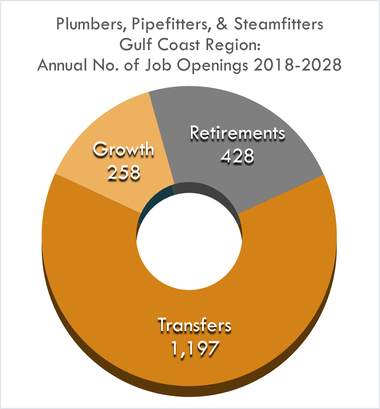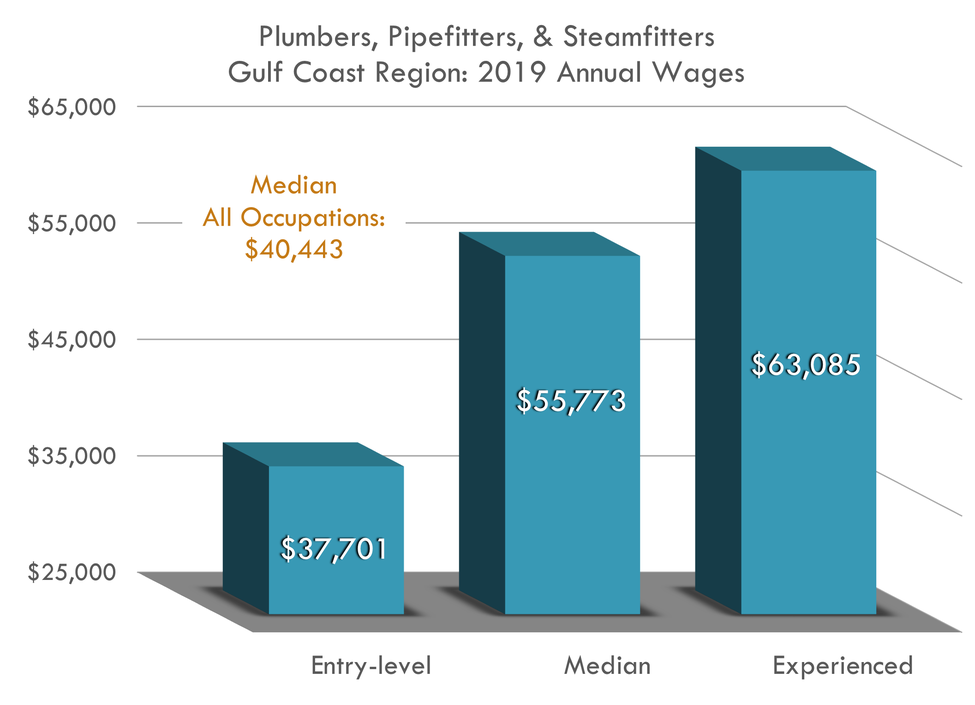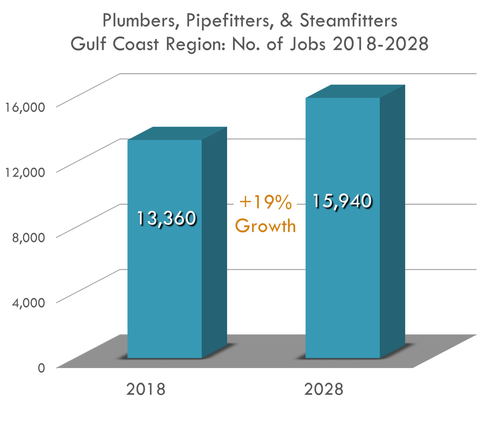
- Conózcanos
-
Para individuos
-
Orientación profesional »
- Rehabilitación Vocacional
- Atención a veteranos
- Servicios a jóvenes
- Búsqueda para adultos jóvenes
- Ayuda financiera para adultos jóvenes
- Elementos de los servicios para adultos jóvenes
- Educación y alfabetización para adultos
- Programa “Cuando sea grande”
- Your Career Your Choice
- Programa de empleo para personas mayores en servicio a la comunidad (SCSEP, por sus siglas en inglés)
- Ampliación del cuidado infantil temprano
- Calidad de educación infantil
- Calidad de educación infantil »
- Ayuda financiera »
-
Orientación profesional »
- Para empleadores
- Buscar oficina de empleo
-

 Navegación principal
Navegación principal
Mire esto
- Montadores de tuberías
- Video de empleo de montadores de tuberías o plomeros
- Un día en la vida de un plomero
Recursos relacionados
- Correlación de empleos en Work In Texas
- Construction & Maintenance Education Foundation
- Construction Citizen
- Build Your Future
- UpSkill Houston
- Texas Internship Challenge
- Texas Career Check
- My Next Move
Institutos de enseñanza superior
- Alvin Community College
- Blinn College
- Brazosport College
- College of the Mainland
- Galveston College
- Houston Community College
- Lee College
- Lone Star College
- San Jacinto College
- Wharton County Junior College
Universidades
Fontaneros y montadores de tuberías
Llegue a las cañerías para tener una carrera confiable
 Los plomeros, cañeros y montadores de tuberías forman parte de las ocupaciones de la construcción más grandes y mejores pagas. Es un trabajo que se remonta a la Grecia antigua, cuando el primer pueblo quería obtener agua más rápido desde el acueducto hasta su ciudad.
Los plomeros, cañeros y montadores de tuberías forman parte de las ocupaciones de la construcción más grandes y mejores pagas. Es un trabajo que se remonta a la Grecia antigua, cuando el primer pueblo quería obtener agua más rápido desde el acueducto hasta su ciudad.
En la actualidad, su trabajo es un poco más complejo, pero quizás no lo note, ya que la mayoría de los sistemas de cañerías están escondidos bajo tierra y en lugares que la mayoría de las personas no se atreve a visitar. La mayoría de las personas está familiarizada con los plomeros, pero los instaladores de tuberías también instalan, mantienen y reparan distintos tipos de sistemas de tuberías que transportan agua, vapor, aire u otros líquidos o gases, respectivamente. En la región de la Costa del Golfo, una gran parte de estos empleos están también en la industria del petróleo y el gas.
El trabajo se puede hacer en una casa residencial, en un edificio comercial, en una fábrica, en una planta de tratamiento de agua, en una planta eléctrica, etc. La demanda de estos profesionales sigue creciendo como consecuencia de una población en constante crecimiento y de un creciente número de «baby boomers» que se jubilan.
Se estima que existen alrededor de 1,883 puestos vacantes anuales.

Para 2028, la región de la costa del Golfo espera necesitar más de 15,000 plomeros e instaladores de tuberías.

Entonces, ¿qué tipo de carreras de plomero, cañero o montador de tuberías existen?
- Construcción, mantenimiento y reparación residenciales
- Construcción, mantenimiento y reparación comerciales
- Construcción, mantenimiento y reparación industriales
Camino para convertirse en plomero
Aval de la escuela secundaria: Industria y comercio
Obtener una pasantía es el primer paso y para eso necesita un título de escuela secundaria o equivalente junto con un gran entendimiento en matemáticas y computadores. Con una pasantía inmediatamente después de la escuela, los plomeros y los instaladores de tuberías comienzan a trabajar de inmediato y ganan al menos entre 1,700 y 2,000 horas de capacitación en el trabajo pagas y el equivalente a un mínimo de 246 horas de educación técnica. Los institutos de enseñanza superior y las escuelas vocacionales también ofrecen cursos para prepararse para una carrera, pero no son necesarios. 
Después de la pasantía, un plomero debería tener una licencia de jornalero para probar que tiene las calificaciones básicas para trabajar y conocimiento de plomería y de código de gobierno. Esto requiere lo siguiente:
- Tener al menos 4 años de experiencia instalando cañerías
- Haber completado un reconocido programa de pasantía de 4 años
Luego, después de la pasantía, pueden obtener una licencia de plomero máster de la Junta Estatal de Texas de Examinadores de Plomería que requiere haber tenido una licencia de jornalero por, al menos, 2 años.
Existen otras certificaciones disponibles en sistemas de cañerías especializados que se requieren en el estado de Texas para trabajar en cañerías especiales (por ejemplo, líneas de gas).
|
Institutos de enseñanza superior - Ofertas de capacitación según la demanda
|
Capacitación de aprendizaje |
Principales empleadores en la región de la Costa del Golfo
Si tiene dudas acerca de los perfiles profesionales o de la industria, o si es una empresa ubicada en la Costa del Golfo, escríbanos a webmaster@wrksolutions.com.
**Incluye los siguientes condados: Austin, Brazoria, Chambers, Colorado, Fort Bend, Galveston, Harris, Liberty, Matagorda, Montgomery, Walker, Waller y Wharton. |
